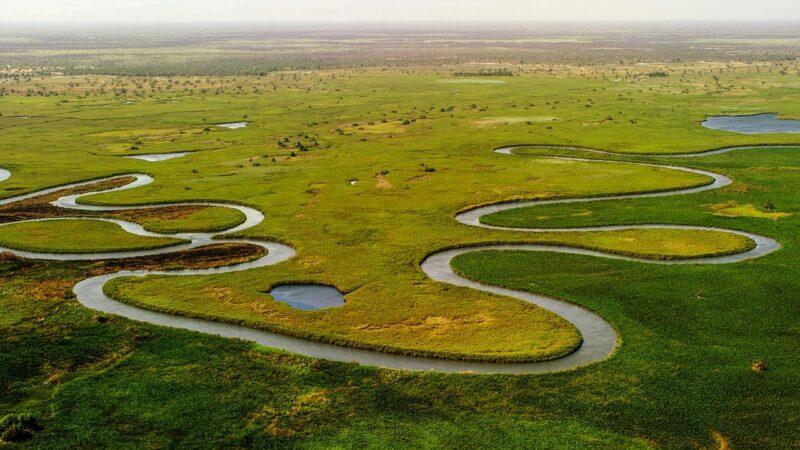The Fascinating Life Cycle of Rivers: From Mountain Streams to Vast Deltas
November 14, 2024

Rivers are the veins of our planet, carving pathways through landscapes and nourishing ecosystems along their journey from mountainous origins to grand deltas where they meet the seas. Understanding the life cycle of rivers not only offers insight into the natural world around us but also highlights the importance of water resources for human civilization. In this article, we will explore the different stages of river development, key features, and the environmental significance each phase holds.
1. Sources and Headwaters: The Birth of a River
The life cycle of a river begins in mountainous regions, where precipitation accumulates and year-round melting snow contributes to the formation of small streams and creeks. These headwaters are crucial as they gather water from various sources, including rainwater, springs, and glacial melt.
Key Characteristics of Headwaters:
- Elevation: The headwaters usually have high elevations, which contribute to faster water flow, shaping the river’s initial path through steep valleys.
- Erosion: As water cascades down rocky terrains, it erodes the land, creating new channels and redistributing sediments, which is vital for future river stages.
- Microhabitats: The unique environments found in headwaters support diverse flora and fauna, including specialized organisms that thrive in cold, oxygen-rich waters.
Headwaters play a critical role in the river’s health, acting as sensitive indicators of environmental changes due to their vulnerability to pollution, habitat destruction, and climate change.
2. The Journey of a River: Tributaries and Watersheds
As rivers flow downstream, they encounter various tributaries that contribute additional water, creating an interconnected network of waterways. This stage involves the river acquiring characteristics shaped by the landscapes it traverses:
Key Features of the Journey:
- Watershed: A watershed is the land area that drains into a river system. It is essential for maintaining the river’s flow and quality, collecting rainfall and runoff from the surrounding environment.
- Ecosystem Dynamics: Diverse ecosystems emerge along riverbanks, including wetlands that act as natural filtration systems and habitats for numerous species.
- Changing Geography: The topography changes from rocky terrains to flat plains leading to slower flow velocities, allowing for sediment deposition which affects the river’s course and character.
This journey highlights the river’s adaptability and the interdependence of its surrounding environments, playing a significant role in shaping landscapes and sustaining ecosystems.
3. The Meandering Stage: Creating Oxbows and Floodplains
As rivers flow across broader landscapes, they often develop meanders—curved bends that can create unique geographic features like oxbow lakes and floodplains. This eroding and depositing stage is crucial for the ecosystem:
Key Characteristics of Meandering Rivers:
- Oxbow Lakes: When a river meander becomes too pronounced, sections of the river can be cut off, forming isolated oxbow lakes that provide distinct habitats for wildlife.
- Floodplains: The flat areas adjacent to rivers that flood periodically enrich the soil, providing fertile land for agriculture and diverse ecosystems that flourish with seasonal inundation.
- Natural Channel Changes: Erosion and deposition continuously shape meanders, allowing rivers to carve new paths and maintain their dynamic nature. This also creates habitats for various aquatic and terrestrial species.
The meandering stage plays a vital role in nurturing biodiversity, as the seasonal changes lead to varied habitat conditions essential for organism survival.
4. Delta Formation: Where Rivers Meet the Sea
Upon reaching their endpoint, rivers often form deltas—landforms created by the deposition of sediment carried from upstream. This transition from freshwater to saltwater is rich in resource deployment:
Key Features of Deltas:
- Sediment Deposition: As rivers enter larger bodies of water, their velocity decreases, resulting in sediment accumulation that helps create new land and ecosystems.
- Biodiversity Hotspots: Deltas support rich biodiversity due to their blending of aquatic and terrestrial environments, attracting a variety of wildlife including migratory birds and fish species.
- Human Settlements: Since ancient times, deltas have been fertile grounds for agriculture and human habitation due to their rich soil and access to water, making them significant cultural and economic zones.
Deltas exemplify the culmination of a river’s life cycle, showcasing the intricate relationship between freshwater systems and the surrounding environment.
5. The Human Impact on River Life Cycles
While rivers are naturally dynamic systems, human activity has significantly impacted their life cycles. Urbanization, pollution, dam construction, and climate change threaten the integrity of these critical ecosystems. Understanding these impacts is essential:
Key Human Impacts Include:
- Pollution: Waste disposal, agricultural runoff, and industrial discharges contaminate river ecosystems, threatening aquatic life and compromising water quality, leading to ecological imbalance.
- Dams and Hydro Power: While beneficial for energy production, damming rivers can disrupt natural flow patterns, leading to habitat fragmentation and altering the sediment deposition essential for delta formation.
- Climate Change: Changes in precipitation patterns affect river flows and temperature, jeopardizing fish migration patterns and the overall health of river systems.
Addressing these challenges demands concerted efforts for sustainable management and conservation practices to ensure the longevity and health of river systems worldwide.
Conclusion: The Continuing Journey of Rivers
The life cycle of rivers is a magnificent journey, from mountain streams to vast deltas. These natural phenomena are vital for sustaining ecosystems, supporting biodiversity, and providing essential resources for human life. They remind us of the intricate connections between land, water, and living organisms. By fostering awareness and understanding of river life cycles and promoting sustainable practices, we can ensure the health and vitality of these critical water sources for generations to come. Efforts in conservation and sustainable management practices are more vital than ever in safeguarding the heritage and future of our planet’s rivers.
If we can learn to respect and protect these vital ecosystems, rivers will continue to flow, and their stories will persist through the ages, enriching our world with unmatched beauty and resilience.







